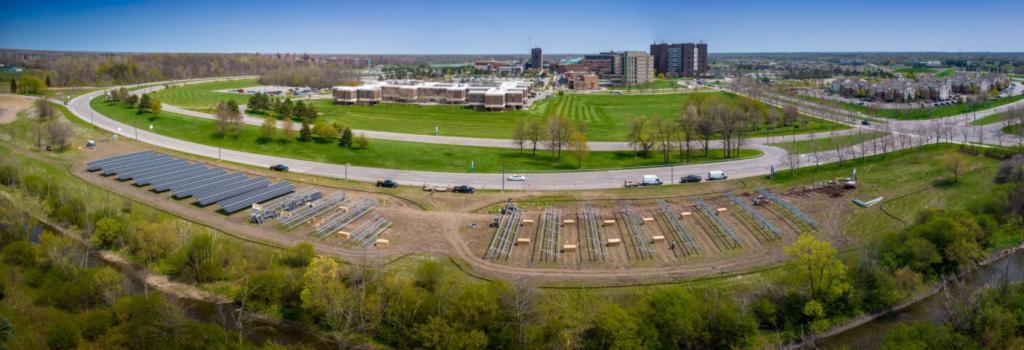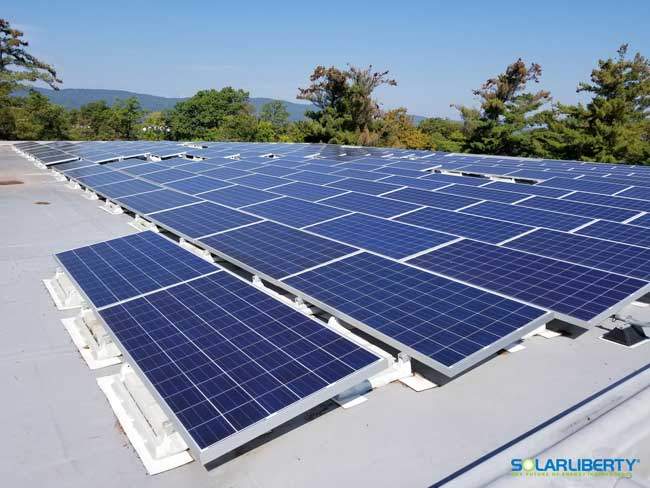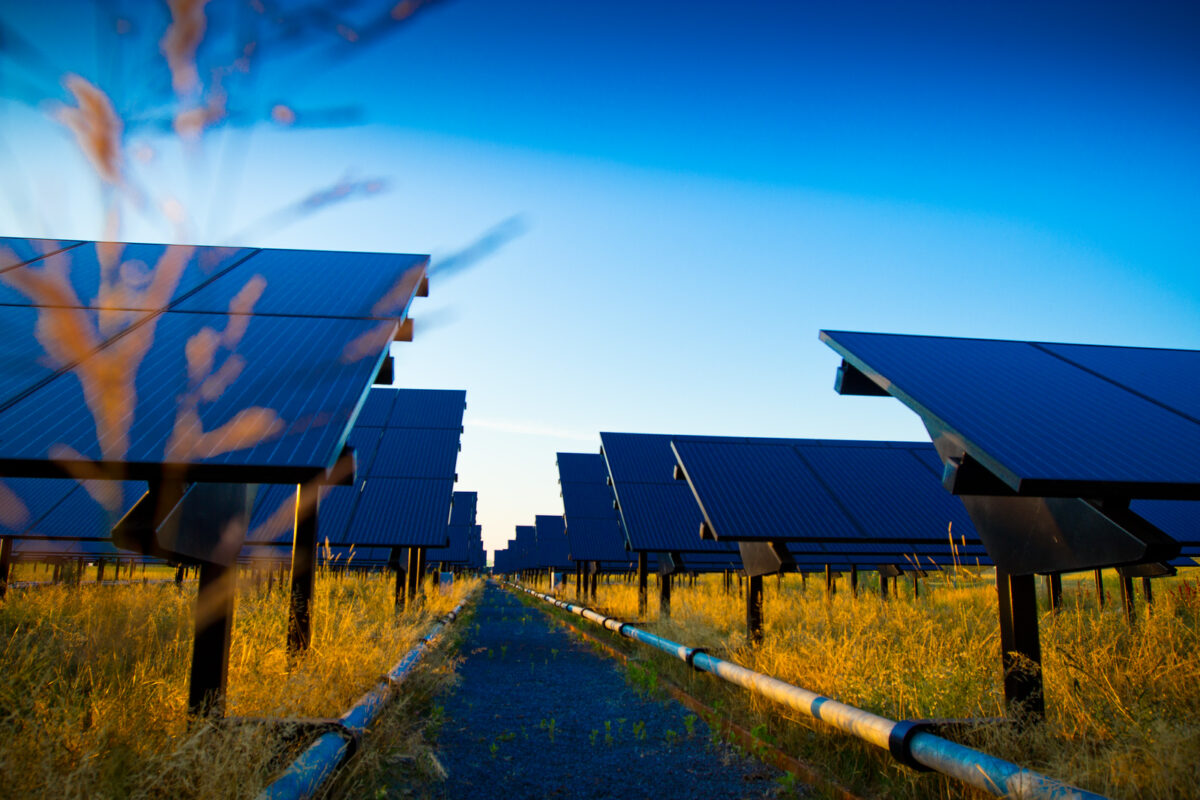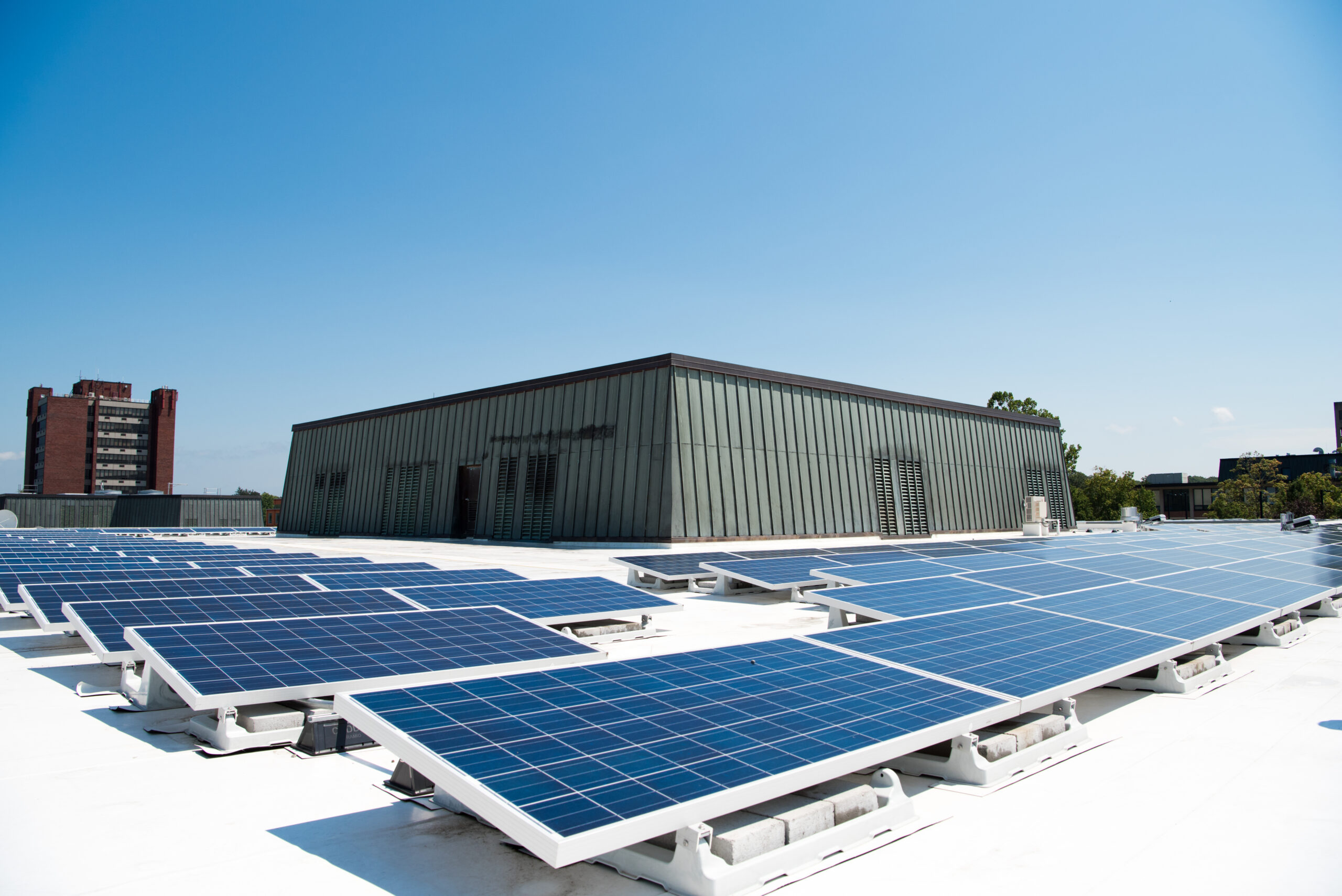UB begins construction on ground-mounted solar panels

ubspectrum.com
Dan Eastman
April 23, 2021
UB has begun construction on five ground-mounted solar panel sites around North Campus, which officials expect to be completed by fall 2021.
The five new sites — four along Bizer Creek and a larger one along the Amherst Bike Path on UB property — are expected to produce a total of 11.2 million kilowatt hours (kWh) of energy, according to a UB statement. UB currently generates about 400,000 kWh with its Solar Strand site, which is located at the Flint Road entrance of North Campus.
“This spring, the university will also be releasing an off-site solar RFP (request for proposal),” UB spokesperson David Hill told The Spectrum. “This, taken together with the on-site projects, will cover 100% of our direct electricity use.”
These panels are a part of UB’s ongoing Climate Action Plan, which consists of 10 initiatives over 10 years, according to Ryan McPherson, UB’s chief sustainability officer. The plan is part of an effort to have UB directly purchase 100% of its electricity from clean energy sources by 2025.
“[One initiative] nicknamed ‘not all energy is created equal’, meaning the electricity load, roughly accounted for 30% of [UB’s] greenhouse gas emissions,” McPherson said. “We have been working on how to get that right, how to get that to zero. One strategy has been purchasing renewable energy credits… but our overall goal has been to directly purchase that renewable energy from both on and off our campus. We feel that’s the most responsible thing to do, to not just shift [the footprint] onto other communities and places.”
UB is working on the project with Solar Liberty, a Western New York company that is the largest solar energy installer in New York State. Solar Liberty built and operates UB’s Solar Strand and has worked with other SUNY schools on solar projects.
Hill says the construction and operation of the project won’t cost UB anything.
“UB is not responsible for paying upfront costs,” Hill said in a statement. “Instead, Solar Liberty will install, own and operate the solar arrays. UB promises to buy the energy the arrays produce over the next 20 years at an agreed-upon price.”
UB projects the Bizer Creek solar panels to produce 2.9 million kWh, the equivalent of offsetting 487 homes annually, in its first year. This system will cover approximately six acres and host roughly 5,850 solar panels. UB projects that the project will create 27 jobs.
The Solar Stroll — located to the east of Millersport Highway, adjacent to the Ellicott Creek Bike Path — is projected to produce 8.3 million kWh, the equivalent of offsetting 1,354 homes annually, in its first year. The system will cover approximately 24.5 acres and host about 16,770 solar panels. UB projects that the project will create 37 jobs.
UB was ranked No. 1 in the world for climate action in the 2021 Times Higher Education Impact Rankings. The climate action ranking “measures universities’ research on climate change, their use of energy and their preparations for dealing with the consequences of climate change,” according to THE.
Of the 20 or so roofs that were initially flagged as possible homes for solar panels, four have been designated as “on track”, including Baird Hall, the Center for the Arts, the Beane Service Center and Helm Warehouse. Norton Hall already has solar panels installed on its roof, as part of the Solar Strand project. Due to structural integrity and preexisting systems on roofs, many of UB’s rooftops are not suitable for solar panels.
As for the ground mounted solar panels, McPherson says their locations — Bizer Creek, off the ramp of the I-990 and the bike path — were reviewed under the State Environmental Quality Review Act, which assessed the environmental impact of this project on these locations. McPherson says the assessments show that adverse effects will be mitigated.
“We wanted to mandate that once those solar arrays were up, all of the ground covering will go back to its natural state, to create a continued habitat,” McPherson said. “We also wanted to follow the precedent that we tried to create with the solar strand here on the North Campus; we wanted it to blend in with nature as much as it possibly can and try to strike this balance between taking climate action and protecting our environment.”




